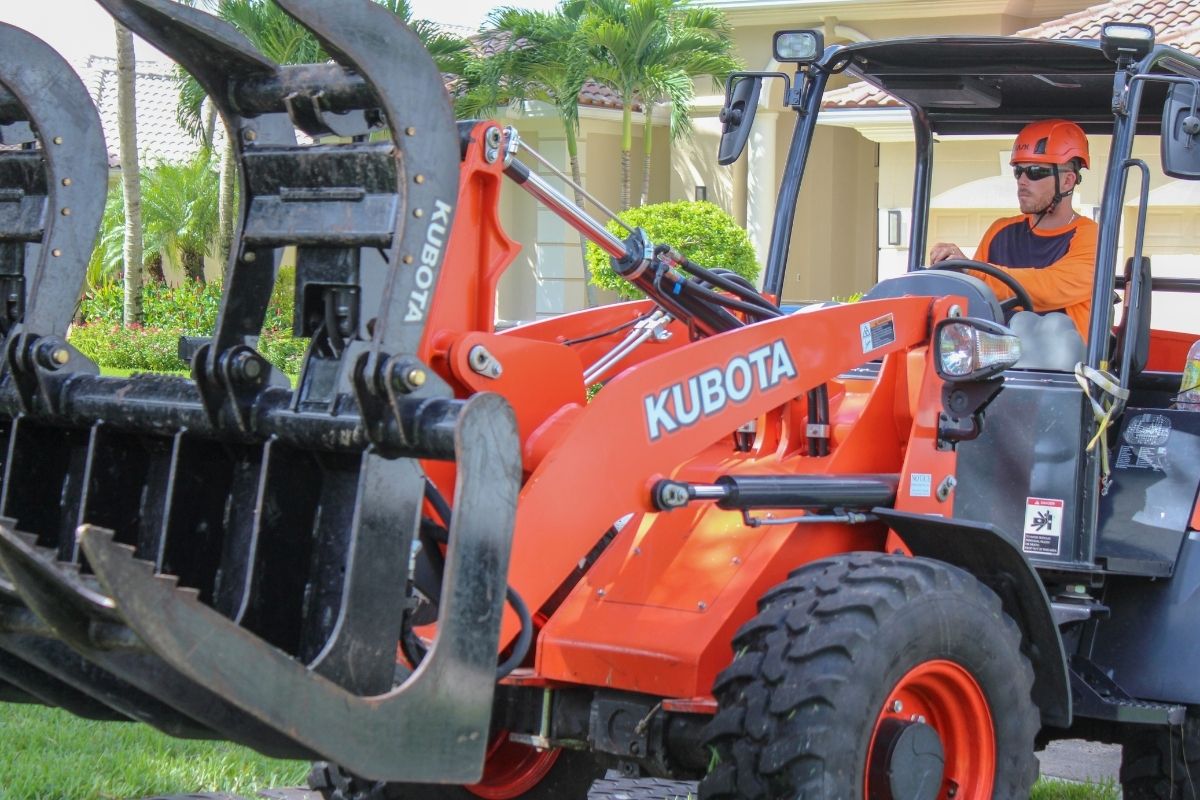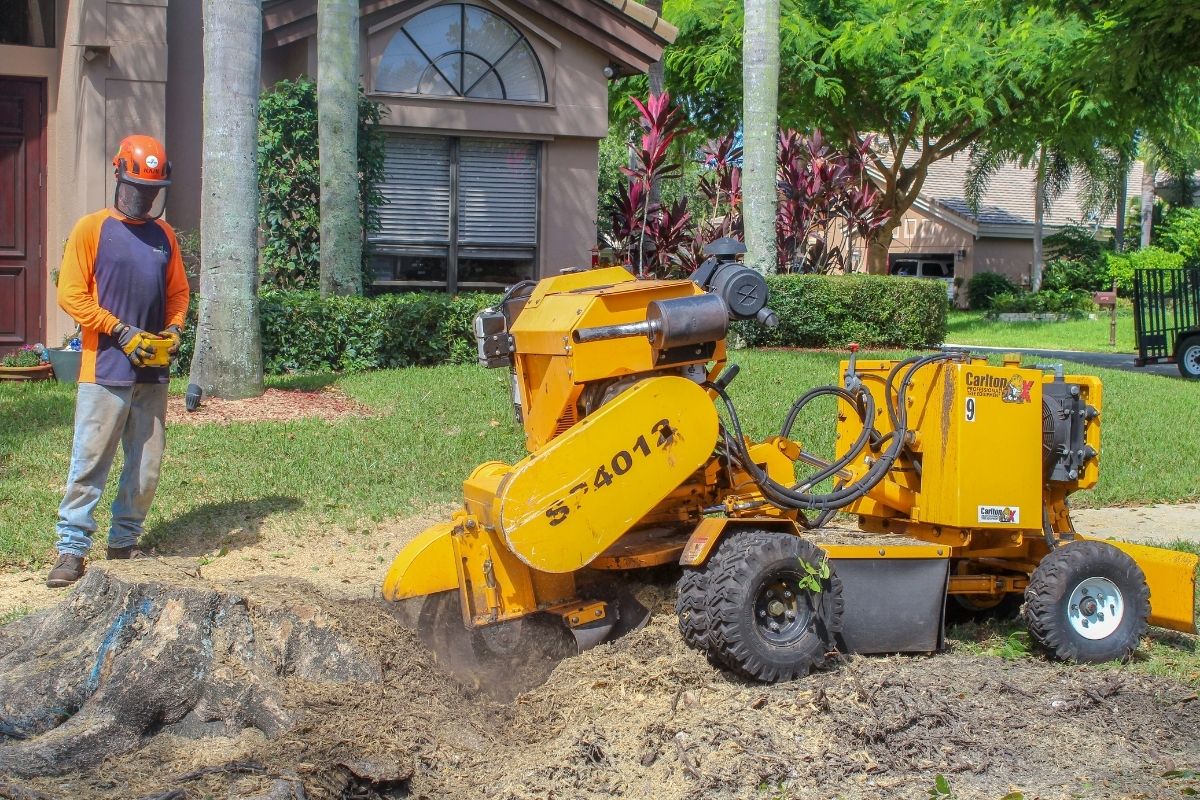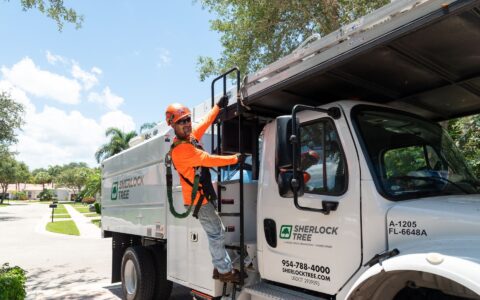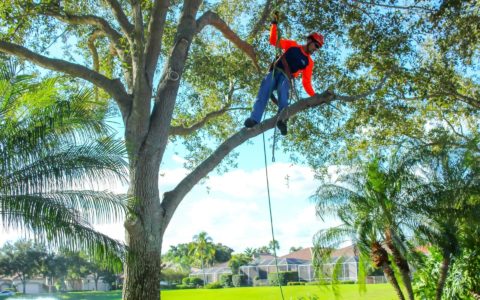When you have a tree cut down (such as any of these invasive trees in South Florida), you’ll be left with the stump. Whether or not you decide to remove the tree stump is up to you, but most people choose to get rid of it. Not only will your property look better without an unsightly stump, but stump removal will also prevent attracting pests, spreading plant diseases, tree regrowth, and tripping hazards. But how, exactly, do you get rid of a tree stump?
In this article, we cover:
- different methods of tree stump removal,
- the pros and cons of each,
- whether or not you should also remove the tree roots,
- DIY stump removal methods, and
- the best time to have a tree stump taking out.
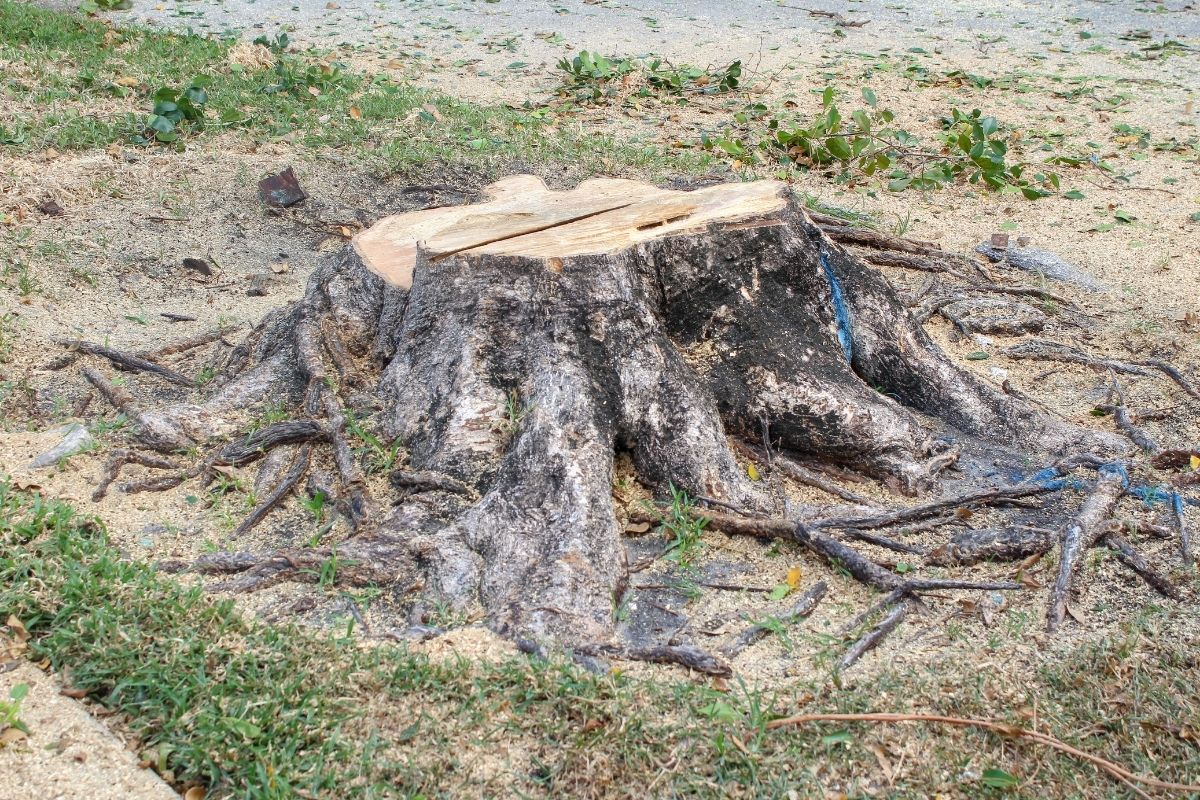
How to Get Rid of a Tree Stump
If you want to remove a tree stump, there are several ways to do it – either by hiring a tree service company or by doing it yourself. However, we caution homeowners that stump removal is usually not a DIY job.
Removing a Tree Stump With a Stump Grinder
For larger tree stumps, you’ll need a stump grinder. This heavy equipment grinds out the stump’s wood to below ground level, ensuring that your tree stump won’t re-sprout and won’t be visible. They work by chewing up stump wood with a powerful circular blade, quickly reducing a tree stump to wood chips that can be easily transported or left on site to use as mulch.
Stump grinders come in a range of sizes and smaller models can often be rented for homeowner use. But unless you’re removing a very small stump, they tend to be underpowered for the job. Plus, they’re hard to handle unless you know exactly what you’re doing.
Using a grinder for tree stump removal is dangerous work and creates a lot of debris. Before starting work, a professional tree crew will set up screens or shields to protect your landscape and house from flying debris. Without this protection, stump removal could easily damage your and your neighbor’s property (no one enjoys replacing broken windows!).
Two advantages that make a stump grinder one of the best removal methods are that:
- it doesn’t disturb the soil around your stump; you just grind down the wood where it is, and
- you can replant in the same area (many parts of South Florida require replanting when a tree is taken down).
Using Heavy Equipment to Get Out Your Tree Stump
A backhoe or excavator, bulldozer, skid steer, or similar piece of heavy equipment can be used to pull, push, or dig a tree stump out of the ground. Many can also take specialized attachments, such as a stump grinder or auger.
The “quick and dirty” way to get rid of a stump is to simply push it out of the ground with a bulldozer (although that may not work with larger stumps). Alternatively, fasten a root hook to the back of the bulldozer, attach it to the stump, and pull out the stump. This method is best used when clearing all trees from a piece of land, rather than for only one or two trees. Why? Because it makes a huge mess! Plus, there’s a high risk of damaging nearby plants and structures.
Another option is to dig out the stump with a backhoe. Depending on the size of your tree stump, you may have to excavate a large area around the stump to expose it. This is also messy work! Plan to either remove all surrounding plants and property first or expect they may be damaged if left in place.
If you’re using an auger bit, attach it to the equipment, position it over the stump, and drill down. Like a stump grinder, the auger will chew up the stump wood as it bores through. However, you’ll be left with the perimeter of the stump and a hole in its middle. If you want the stump to be completely gone, you’ll have to deal with these remaining parts.
Pulling Out a Stump (With Chains)
Another method for removing a tree stump is with a choker chain or chain grubber attached to a vehicle or heavy equipment (or a heavy-duty cable and winch). We do not recommend this method, for reasons that should be clear: accidental injuries and damage. Think flying chains and you’ll see why.
Yanking out a stump with chains should be limited to small trees and woody shrubs with small root systems. And please don’t try this unless you have plenty of experience, the right equipment, and good insurance.
Digging Out a Stump by Hand
Digging out a stump with a shovel or mattock is hard, dirty work. Removing a small diameter tree trunk is manageable by hand. But a large, deep tree stump can be a challenge to anyone’s upper body strength and isn’t a solo job.
If you’re removing a small tree and know you’ll be removing its stump with hand tools, leave the stump about chest height. This will give you good leverage to rock the stump loose or push it over with your body weight.
When you dig out a stump by hand, you need to dig only deep enough to find the tree’s anchoring roots. Cut them off to free the stump. Depending on the size of the roots and the tools you have, you can use a pruning saw, ax, mattock, or a chainsaw (use a special chain with carbide teeth and clear away as much dirt as possible before using a chainsaw for this).
Other Stump Removal Methods for DIYers
Common methods for dealing with a tree stump without removing it involve using chemicals. We don’t recommend these methods but understand that their low cost is attractive to many people.
Epsom Salts
This method of stump removal involves drilling holes into the top of the stump and pouring Epsom salts (magnesium sulfate) into the holes.
Epsom salts work by drawing moisture out of the stump to dry it. But the salts will also draw moisture out of the soil (which could affect surrounding plants) and heavy concentrations will affect the pH of the soil. This can be beneficial if your soil is lacking in magnesium or sulfur, but it can also kill nearby plants.
This method will eventually allow you to break apart the stump and get rid of it. But using Epsom salts for stump removal takes a long time so be prepared to look at your stump for the foreseeable future.
Stump-Killer Chemicals
You can find many pre-mixed stump remover chemicals at hardware stores. As with Epsom salts, you drill holes into your tree stump and pour in the chemicals. Some products require you to cover the stump and surrounding area with a tarp to speed up decay.
This method is easy to do and doesn’t cost much. But the powerful chemicals, such as sulfuric acid or glyphosate (Roundup), are toxic and can kill other plants and soil organisms. If you choose this route, always wear chemical-resistant gloves, goggles, full-length sleeves and pants, and heavy, close-toed shoes while handling the chemicals. Chemical burns can be even worse than getting burned with fire.
Don’t Do This!
While it sounds like fun, setting your stump on fire with lighter fluid or charcoal fluid is a bad idea. Don’t be tempted to try this shortcut unless you want to be known as the person who set everything on fire.
Tree Roots and Root Ball Removal
Uprooting a tree’s entire root system requires large-scale excavation, particularly if your tree has extensive roots that have spread beneath hardscape surfaces or have entwined with other trees’ roots.
Unless your tree roots have caused damage to your home’s foundation or heaved up a sidewalk, there’s no need to remove them. Just sever tree roots near the stump you want to remove and leave the rest of the root system in the ground.
Tree roots are organic matter; over time, they’ll break down and become part of your soil. Large, woody roots will take a long time to decay, but smaller roots will break down rapidly and disappear into the soil.
Your goal should be to minimize soil disturbance when removing a tree stump. That will help keep your soil’s structure intact, prevent erosion, and leave the complex web of soil life intact.
The Best Time to Remove a Tree Stump
The most efficient way to remove a tree stump is to have it done when you’re having a tree professionally removed. When you have a tree removed by professionals, you have a trained crew and commercial equipment already on site to do the work quickly and safely
Most tree service companies offer stump removal as part of their tree removal services for a small additional charge. If you have a tree removed and then decide later that you want your stump removed, be prepared to pay a higher fee because you’ll require a crew and equipment to make a separate trip back to do the job.
South Florida Stump Removal Service
We offer stump removal as part of our tree removal services. Most of our tree removal customers choose to also have the tree stump professionally removed by our stump grinding crew. If you’re considering tree removal, be sure to ask about having your tree stump taken out at the same time.
That’s because Sherlock Tree Company provides fast, professional work that’s guaranteed and our stump grinding crews work efficiently with our tree removal crews to coordinate the removal of all parts of your tree. You can just sit back, relax, and watch the entire tree disappear!
Call Sherlock for quality tree services
Whether you're looking for specific tree care services, such as palm trimming, tree removal, or disease treatments, or would like one of our Arborists to examine your trees to identify any issues and recommend options, we're always here for you! Just give us a call at 954-788-4000 to set up an appointment.
- « Previous
- 1
- 2
- 3
- Next »
SEE MORE ARTICLES
Looking for more?
We've got you covered with a monthly newsletter full of tips, resources, updates, how-to's, and other helpful information about trees and landscapes in South Florida!

